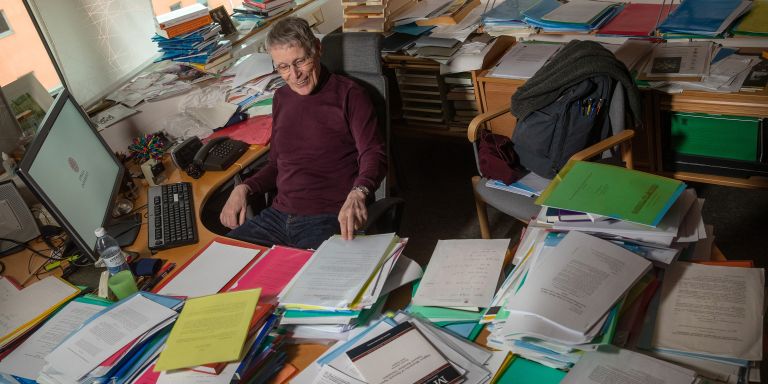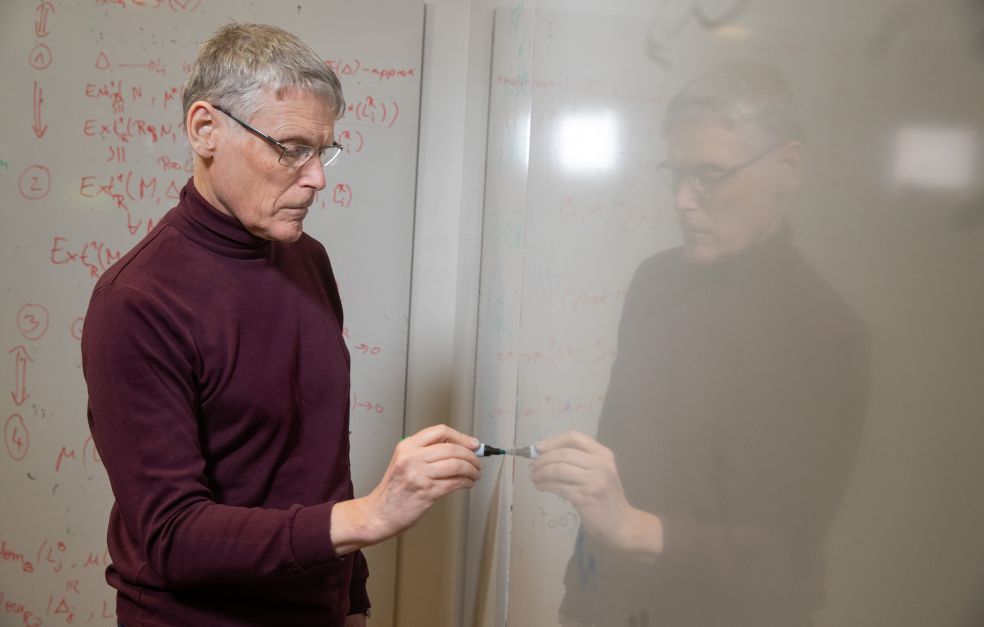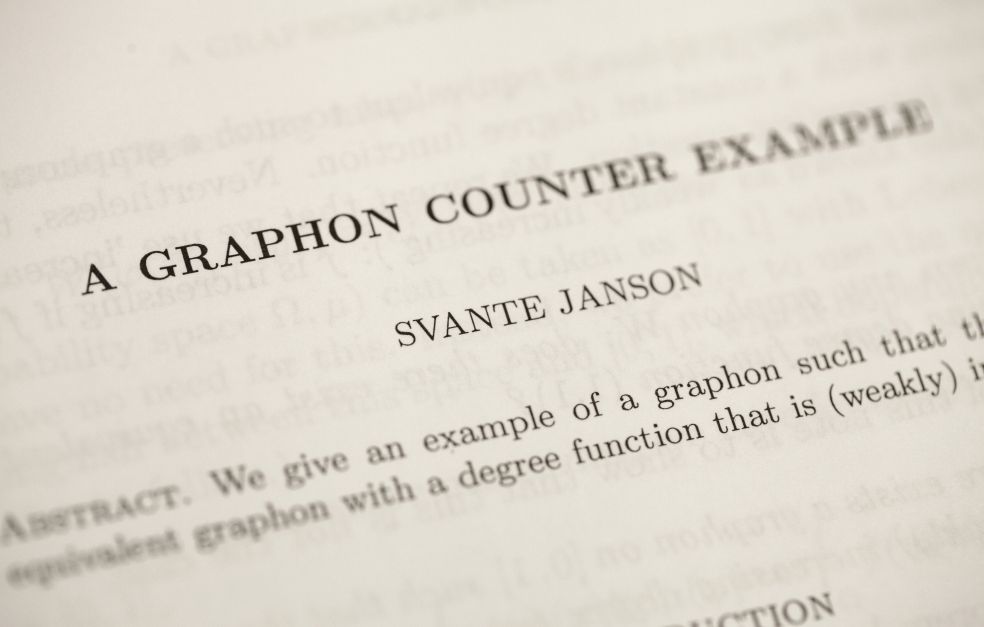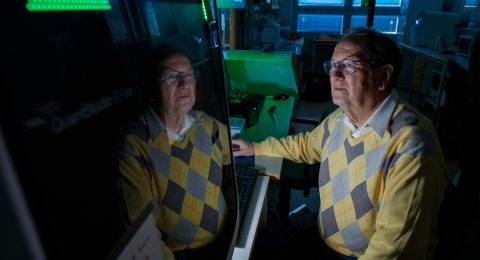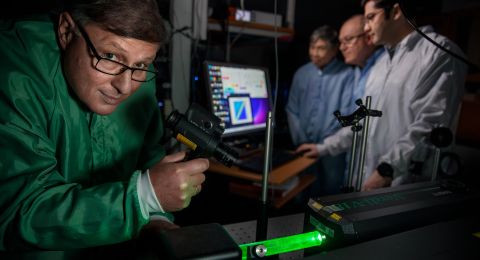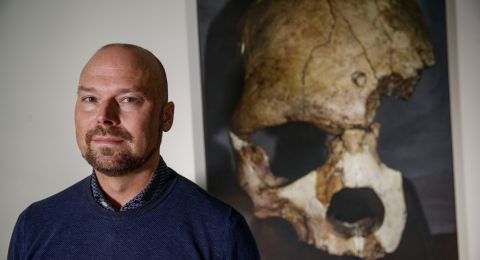Svante Janson is a leading researcher and world authority on random graphs. The mathematical models he is studying could be used to develop new methods in the field of AI – artificial intelligence, and also to shed new light on the spread of infectious diseases, among other things.
Svante Janson
Professor of Mathematics
Wallenberg Scholar
Institution:
Uppsala University
Research field:
Mathematical analysis, probability theory, combinatorial probability and random graphs in particular, as well as analysis of algorithms.
Janson’s mathematical gift was discovered early on, and he was given special permission to start university at the age of 12. Since then, he has stayed true to mathematical research, resulting in four books and nearly 350 scientific articles.
“I average an article a month. I have ideas for even more, but there’s just not enough time,” he says.
Expensive equipment is not needed for his prolific output. His office at the Ångström Laboratory in Uppsala is filled with piles of paper and journals, just as one would expect of a professor of mathematics.
“I prefer to use paper and pen rather than a computer,” he says with a smile.
Methods stimulating AI research
Central to Janson’s research are random graphs, or random networks, as they are also known. These involve pure theory and methodology development, but the results may be of great importance to other researchers.
“I am studying models for random networks, and developing methods that can hopefully be used by those interested in studying networks in different applications.”
One practical example is the internet, either as a physical network of computers or as a logical network of websites and links. Another area with rapidly growing needs is AI. Major research initiatives are under way in this field, including a multibillion kronor program called WASP –
Wallenberg Artificial Intelligence, Autonomous Systems and Software Program.
AI entails processing huge quantities of data for deep learning and complicated data analyses, for example. This makes greater demands of the mathematics, and methods require constant refinement. Janson elaborates:
“The old methods work, but perhaps they’re not the best way forward now as computers become ever faster, and data quantities ever greater. All this gives rise to a constant stream of new mathematical problems to solve.”
“Being chosen as a Wallenberg Scholar has given me long-term security. I haven’t needed to spend time on applying for funding; I’ve been able to concentrate on research instead. The grant has also made it easier for me to recruit postdocs and extend invitations to guest professors. This has enhanced the mathematical environment at Uppsala and led to important collaborations.”
More effective vaccinations
There are also numerous other applications for random graphs, for instance in development of social media, such as Facebook, in biology and genetics, or in the study of infectious diseases.
“We have made a simple model for vaccination, illustrating how disease spreads if the entire population is not vaccinated, and what produces most effect,” Janson explains.
The graph consists of a given number of nodes, and a number of links. Each link connects two nodes on the graph. On a random graph either the nodes or the links are constructed randomly.
A graph used to predict the spread of disease may have nodes representing the inhabitants of Sweden, and links denoting all contacts between two people where infection may pass from one to the other, as in the case of influenza, for example. The model does not, however, provide a complete description of the whole population and how people have contact with each other.
“But we can obtain data on average conditions, and we may assume that they are random within given constraints. If the model is a good one, it may also tell us something about the situation in real life. It can then be refined by anyone wishing to make studies of a more practical nature,” says Janson.
A semester in Cambridge
As a Wallenberg Scholar, Janson has new opportunities to establish a pre-eminent mathematical environment in Uppsala, recruiting postdocs and extending invitations to guest professors. He has also established stronger ties with Cambridge University in the U.K.
“Cambridge has a tradition of mathematical excellence, and I have long collaborated with several mathematicians there. Previously, I was only able to spend a month or so at a time in Cambridge, but thanks to the Wallenberg Scholar scheme, I was able to stay there for a whole semester.”
Researchers in mathematics are usually described as lone wolves, but ideas often come to fruition through personal meetings. Janson explains:
“Many of the details can be sorted out electronically, but the best source of inspiration in problem solving is the meeting between people. Much of my research consists of small projects initiated as a result of personal meetings at conferences. I usually say that the most important part of the conferences are the intervals between lectures – that’s when you have time to talk to people.”
In his day-to-day research, Janson is driven by a desire to find answers to the fundamental questions in mathematics, and to constantly challenge himself to take the next step.
“Curiosity is the main driver. I want to get to the bottom of mathematical problems. But a general trend is to return to older problems that have been sorted out for the simplest sort of random graphs, put them into new contexts, and study new types of random graphs to identify corresponding solutions. In my purely theoretical research, it is seldom the results per se that are most interesting – it is first and foremost developing and refining the methods.”
Text Nils Johan Tjärnlund
Translation Maxwell Arding
Photo Magnus Bergström

